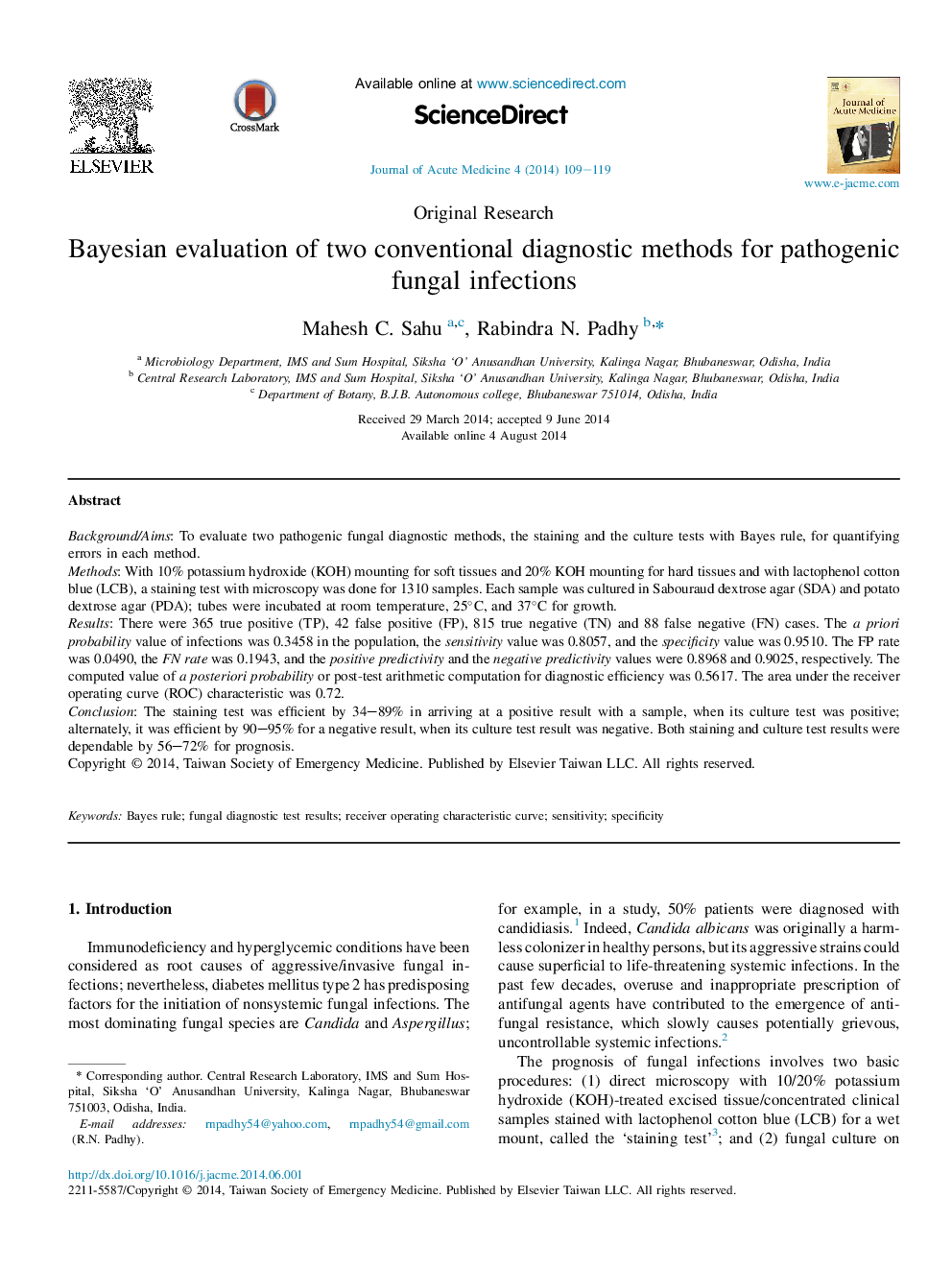| کد مقاله | کد نشریه | سال انتشار | مقاله انگلیسی | نسخه تمام متن |
|---|---|---|---|---|
| 3244892 | 1206572 | 2014 | 11 صفحه PDF | دانلود رایگان |
Background/AimsTo evaluate two pathogenic fungal diagnostic methods, the staining and the culture tests with Bayes rule, for quantifying errors in each method.MethodsWith 10% potassium hydroxide (KOH) mounting for soft tissues and 20% KOH mounting for hard tissues and with lactophenol cotton blue (LCB), a staining test with microscopy was done for 1310 samples. Each sample was cultured in Sabouraud dextrose agar (SDA) and potato dextrose agar (PDA); tubes were incubated at room temperature, 25°C, and 37°C for growth.ResultsThere were 365 true positive (TP), 42 false positive (FP), 815 true negative (TN) and 88 false negative (FN) cases. The a priori probability value of infections was 0.3458 in the population, the sensitivity value was 0.8057, and the specificity value was 0.9510. The FP rate was 0.0490, the FN rate was 0.1943, and the positive predictivity and the negative predictivity values were 0.8968 and 0.9025, respectively. The computed value of a posteriori probability or post-test arithmetic computation for diagnostic efficiency was 0.5617. The area under the receiver operating curve (ROC) characteristic was 0.72.ConclusionThe staining test was efficient by 34–89% in arriving at a positive result with a sample, when its culture test was positive; alternately, it was efficient by 90–95% for a negative result, when its culture test result was negative. Both staining and culture test results were dependable by 56–72% for prognosis.
Journal: Journal of Acute Medicine - Volume 4, Issue 3, September 2014, Pages 109–119
